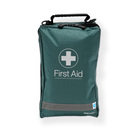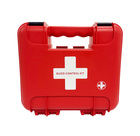Pelvic Injuries
Unlock This Video Now for FREE
This video is normally available to paying customers.
You may unlock this video for FREE. Enter your email address for instant access AND to receive ongoing updates and special discounts related to this topic.
Pelvic Injuries: Understanding the Causes and Treatment
Introduction
Pelvic injuries can result from various incidents, and it's essential to understand how they occur and how to provide appropriate treatment.
Causes of Pelvic Injuries
During a crash, the force of impact often directs towards the pelvis, causing fractures. This force, typically transmitted from the legs through the hip joints, can lead to severe pelvic damage.
Pelvic Fracture Points
The pelvis tends to break at two main points:
- Over the Pubis: The weakest point, often resulting in bladder injuries.
- Through the Joint: Fractures may occur to the right or left of the pubic bone.
Symptoms of Pelvic Fractures
Signs of a pelvic fracture include:
- Intense Pain: Patients often describe severe agony in the pelvic region.
- Incontinence: Loss of bladder control due to bladder damage.
- Leg Presentation: Feet may appear floppy and flat, with no movement.
- Sensation of Pelvic Opening: Patients may feel as if their pelvis has "fallen open."
Treatment and Management
Pelvic injuries require immediate and careful attention to prevent further complications. Treatment measures include:
- Stabilization: Support and splint the pelvis to minimize movement and prevent additional damage.
- Extrication: Handle with caution during rescue operations to avoid exacerbating the injury.
- Medical Attention: Seek professional medical assistance promptly for proper diagnosis and treatment.
Conclusion
Understanding the causes and symptoms of pelvic injuries is crucial for effective first aid and medical intervention. Prompt and appropriate action can help prevent severe complications and ensure better outcomes for patients.
- FPOS Extended unit 3 LO4.7







_-Trauma_10x10_CE.jpg)